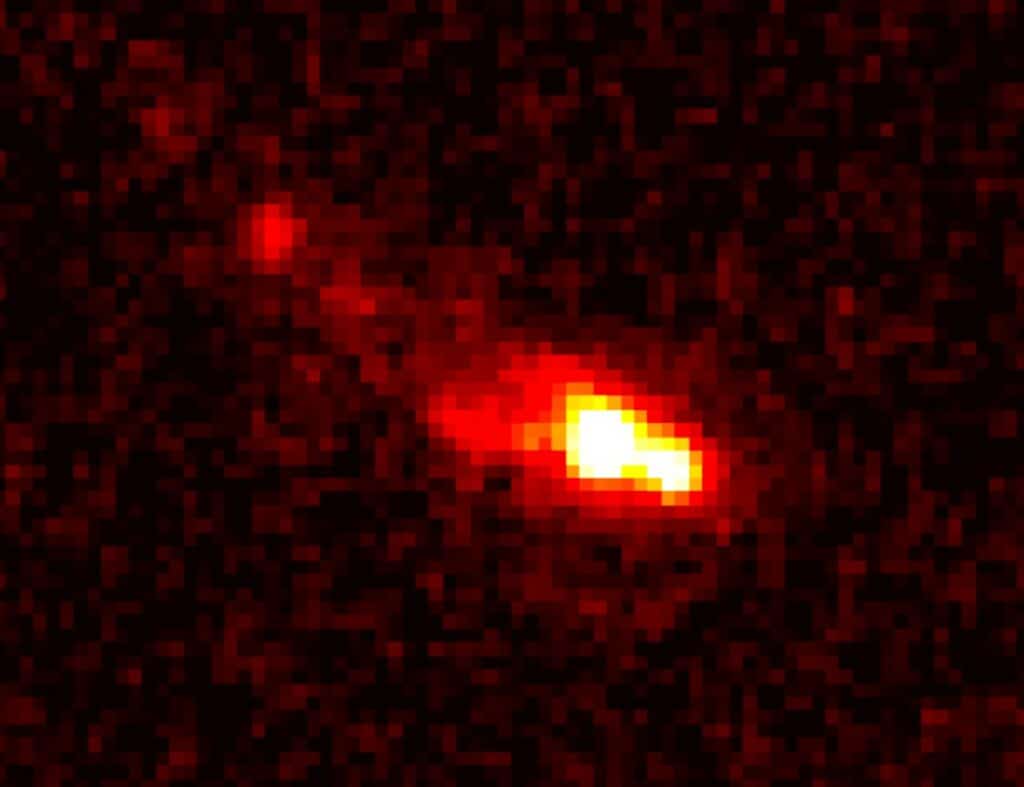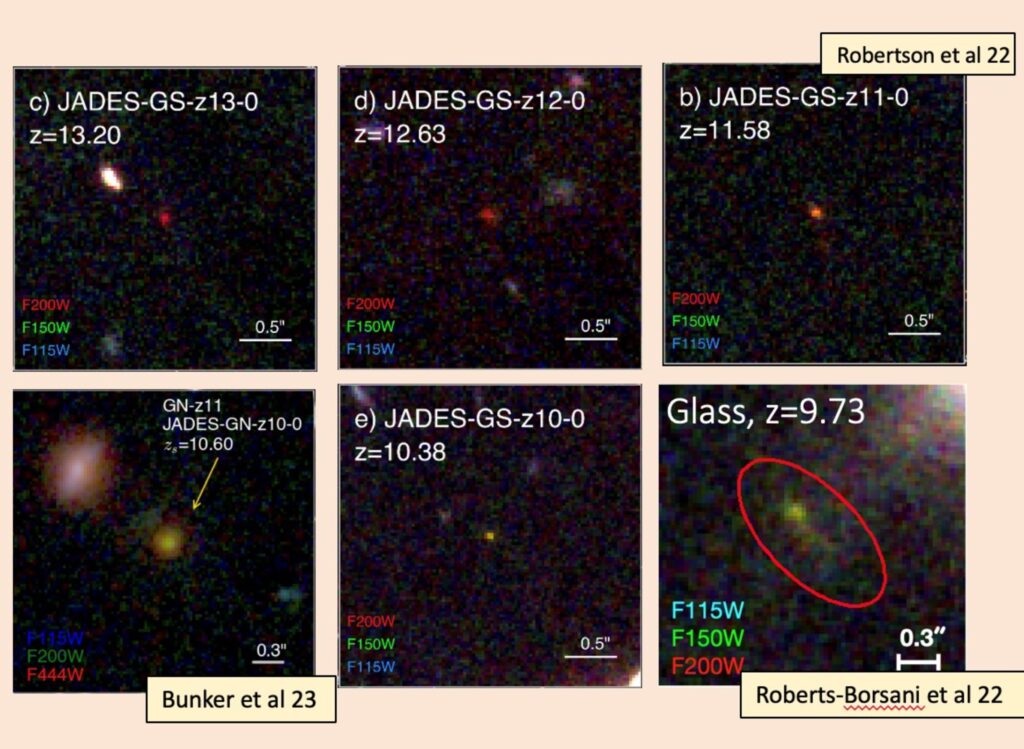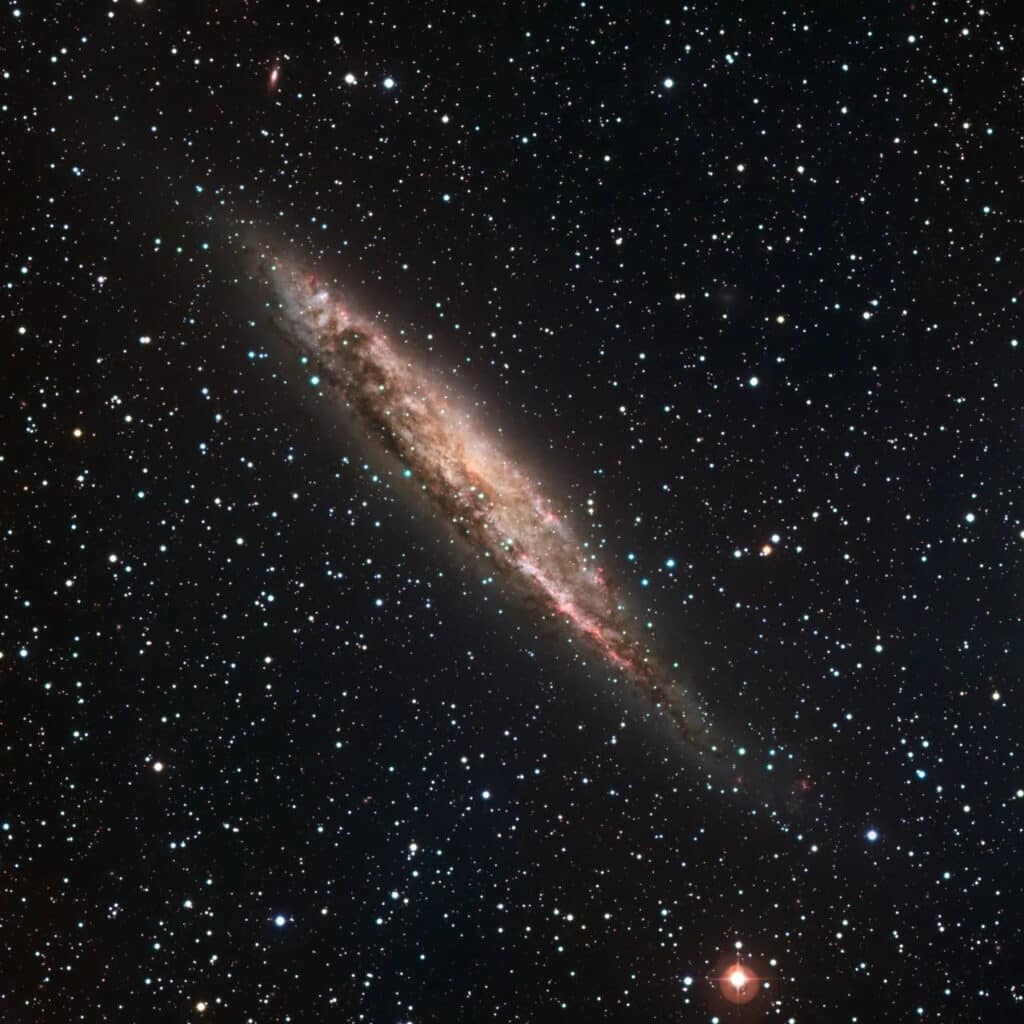An ancient galaxy merger is challenging the way scientists are now viewing star formations. Using NASA’s James Webb Space Telescope, an international research team was able to witness the earliest known merger of galaxies, revealing that stars may have formed at a much faster rate than previously believed.
This discovery, which looks back approximately 13 billion years to a time just 510 million years after the Big Bang, provides critical insights into the infancy of the universe and challenges existing theories of galaxy formation.
The research, published in the journal Nature Astronomy, involved 27 authors from 19 institutions across the globe.

“When we conducted these observations, this galaxy was ten times more massive than any other galaxy found that early in the universe,” says study lead author Dr. Kit Boyett, of the University of Melbourne and a research fellow on first galaxies at the Arc Centre of Excellence for All Sky Astrophysics in 3D, in a media release.
The JWST’s detailed imagery has revealed a complex scene: a galaxy in the midst of merging, consisting of several groups with two main components and a long tail indicative of ongoing merger activity. This configuration suggests that some matter is being jettisoned in the process, marking the observed event as the most distant galaxy merger ever recorded.
“The merger hasn’t finished yet,” notes Dr. Boyett. “We can tell this by the fact we still see two components. The long tail is likely produced by some of the matter being cast aside during the merger. When two things merge, they sort of throw away some of the matter. So, this tells us that there’s a merger and this is the most distant merger ever seen.”
These observations force a reevaluation of the models used by astrophysicists to understand the early universe. The presence of massive objects in the early cosmos, previously thought to be improbable, indicates that galaxies formed and accumulated mass much more rapidly than current models suggest.
A particularly intriguing finding from Dr. Boyett’s research is the identification of two distinct populations of stars within the merging galaxies. This discovery was facilitated by the JWST’s advanced spectroscopy, which allowed the team to differentiate between younger stars, formed as a result of the merger, and an older population that had existed long before.
“The image told us the population of stars was young, but the spectroscopy spoke of stars that are quite old. But it turns out both are correct because we don’t have one population of stars but two,” explains Dr. Boyett. “The old population has been there for a long time and what we believe happens is the merger of the galaxies produces new stars and that’s what we’re seeing in the imaging — new stars on top of the old population.”

This nuanced view of star populations within such ancient galaxies challenges the prevailing understanding and suggests that stars may have formed more efficiently than previously thought. The implications of these findings suggest either the incredible luck of the researchers in observing such a rare event or, more likely, that current simulations underestimate the commonality and mass accumulation capabilities of early galaxies.
The paper calls for a reassessment of how stars formed in the nascent universe, hinting at the necessity to modify existing models to account for more efficient star formation.












